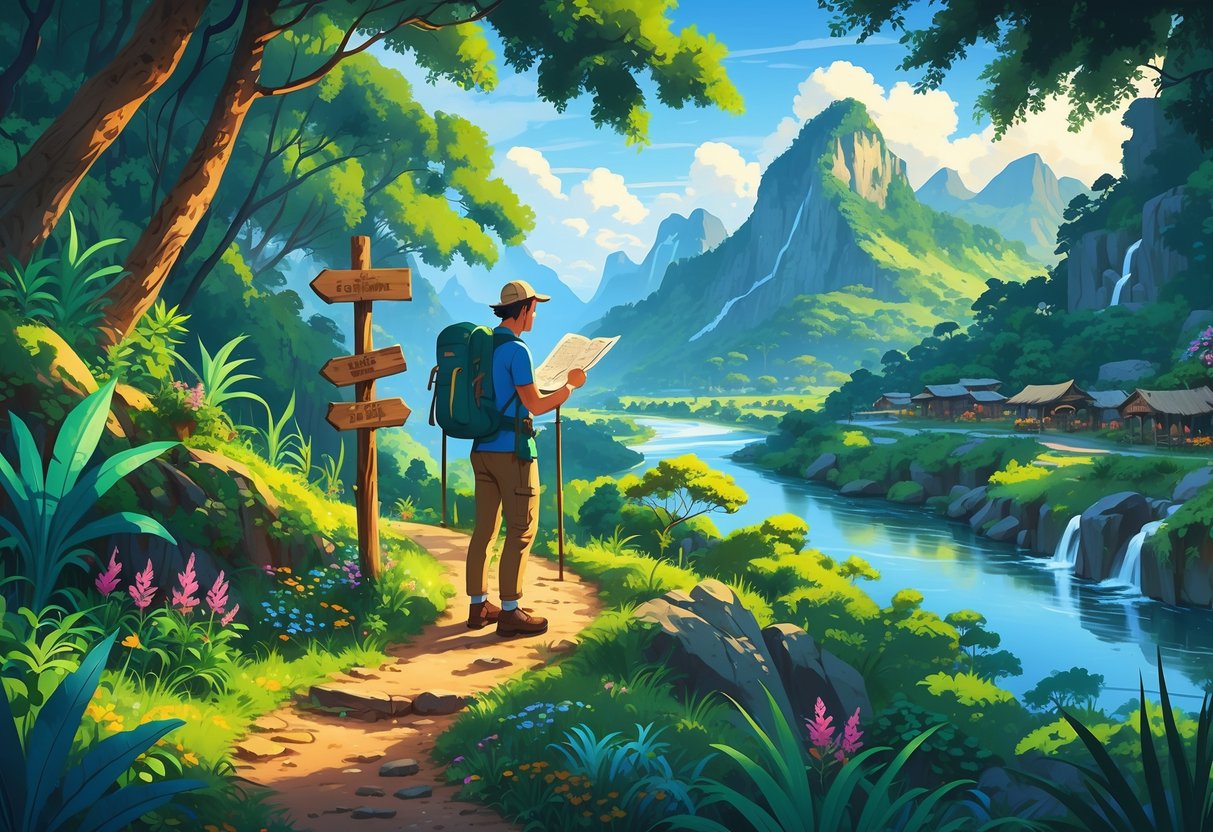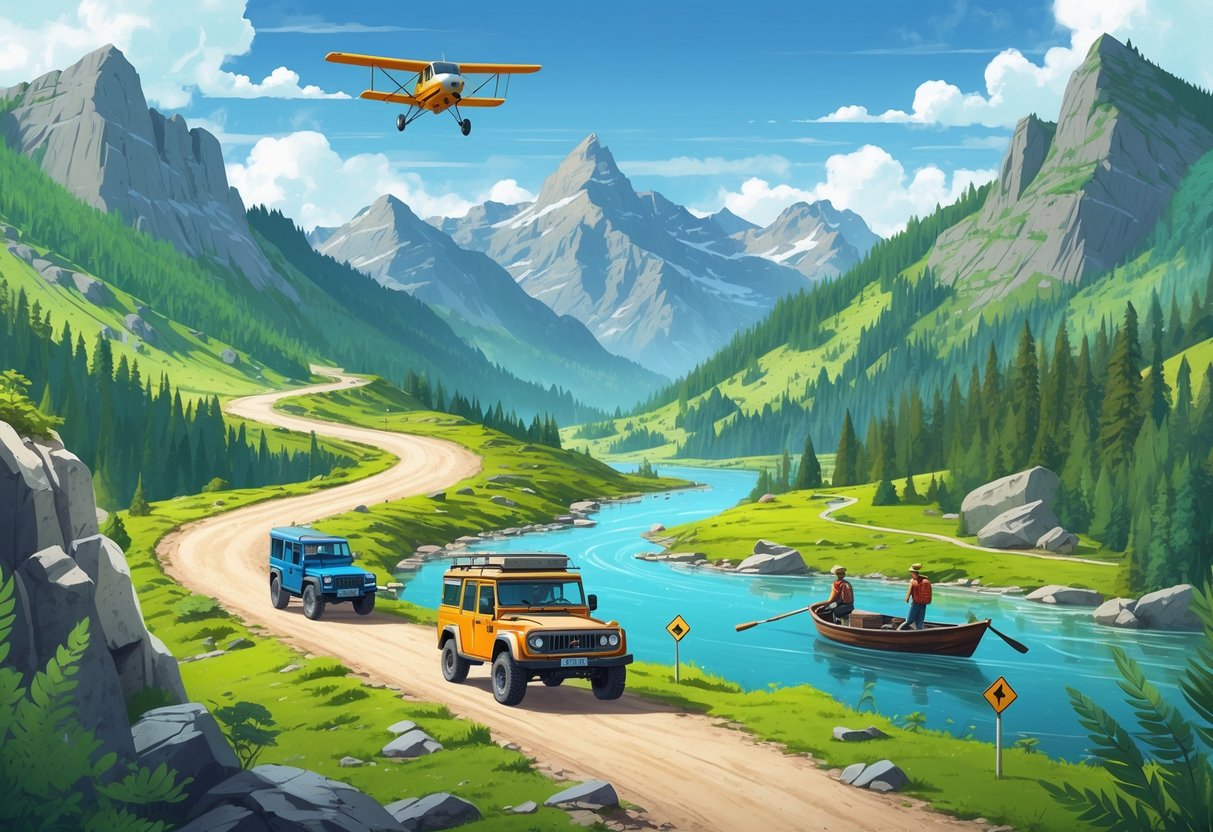
Planning Your Off-the-Beaten-Path Adventure

Exploring destinations away from mass tourism requires careful preparation, flexibility, and a strategic approach to safety and logistics. For an authentic travel experience, it is essential to address unique challenges such as remote location risks, limited amenities, and local regulations.
Travel Tips for Uncharted Locations
Travelers should start by researching their destination using forums, travel blogs, and reputable guides dedicated to uncommon journeys. Leveraging tips from experienced explorers—such as selecting destinations with fewer tourists and seeking out local recommendations—can reveal hidden gems that mainstream guides often overlook, as described in this ultimate guide to travelling off the beaten path.
Making detailed itineraries is valuable, but leaving space for spontaneous experiences can lead to more authentic interactions with local communities. Knowing a few phrases in the local language helps with navigation and problem-solving in areas where English is less common.
Reliable offline maps, translation apps, and back-up batteries are essential tools for navigation and communication. It’s wise to have both digital and printed copies of maps and important travel documents in case of connectivity issues.
Choosing the Right Travel Insurance
Travel insurance is vital when visiting remote destinations where medical facilities and emergency services may be limited. Standard policies may not cover adventure activities such as hiking, trekking, or water sports, making it crucial to evaluate policy details.
Look for insurance plans that cover medical evacuation, trip interruption, and baggage loss. For adventure travel, ensure coverage extends to activities specific to your trip.
Many providers offer adventure-specific policies designed for unique travel experiences in off-the-grid regions. Consider policies that have 24/7 assistance hotlines and partnerships with international clinics.
Always read the fine print to check for exclusions and pre-existing condition clauses before purchase.
Essential Packing and Gear Considerations
Gear selection should match the climate, terrain, and remoteness of the chosen destination. Light, quick-drying clothing, sturdy footwear, and versatile weather protection like packable rain jackets can make a significant difference in comfort and safety.
A minimalist packing list may include:
- Reliable backpack
- Water purification system (straw, tablets, or filter)
- Headlamp with extra batteries
- First-aid kit
- Portable phone charger
- Multi-tool
- Emergency blanket
In places without reliable infrastructure, it’s smart to bring snacks, cash in the local currency, and travel-sized toiletries. Accessibility to basic services is often limited, so self-sufficiency is key.
Safety and Health Precautions
Safety planning for unique travel experiences involves both preventative measures and prepared responses to emergencies. Research current local safety conditions, including climate hazards and travel advisories, through official government and embassy websites.
Getting the proper vaccinations for your destination is essential. Carry documentation of these immunizations since some countries require proof at entry.
Packing basic medications for gastrointestinal issues and allergies can address the most common travel health challenges. It’s also important to have a means of emergency communication, such as a local SIM card or a satellite phone in especially remote areas.
Sharing your itinerary with trusted friends or family adds an extra layer of safety, ensuring someone knows your whereabouts if communication fails.
Transportation and Accessibility Options

Selecting the right transportation is essential when exploring off-the-beaten-path destinations. Remote locations often require multiple modes of travel, creative planning, and flexibility to access areas that aren’t connected by standard tourism infrastructure.
Navigating Remote Areas
Getting to secluded spots usually involves a mix of overland travel and sometimes small local flights. Dirt roads, unmarked trails, and infrequent public transportation are common in rural regions.
Renting a four-wheel-drive vehicle is often recommended for rough terrain and unpredictable weather, especially in mountainous or desert regions. Satellite GPS devices, downloadable offline maps, and a physical paper map should be carried for areas without cell coverage.
Many intrepid travelers rely on local guides with regional knowledge to navigate difficult passages. Some destinations require river crossings by small boats or footbridges, and limited or seasonal access can affect travel plans.
Using Local Transportation
Utilizing local transportation such as buses, shared taxis, tuk-tuks, and minivans allows for an affordable and immersive travel experience. These modes of transport offer insight into everyday life and connect towns not served by major carriers.
Schedules in remote areas can be irregular, with delays or changes common. Travelers should be prepared for flexible timetables and confirm routes in advance.
It is wise to have a backup plan when relying on public transit, especially outside cities. Ticket purchases may occur directly with drivers or at small roadside stands, and advance booking is rarely necessary.
For barrier-free travel needs, research about accessible services is crucial to ensure a smooth journey for travelers with disabilities.
Cruises and Alternative Routes
Waterways remain vital for reaching certain off-the-grid destinations. Riverboats, ferries, and small ship cruises are common options for accessing islands, river communities, or coastal retreats beyond mass tourism routes.
Traveling by water can also provide unique perspectives and lesser-seen views, especially in regions where roads are limited or seasonal. Some companies specialize in active outdoor journeys and custom small group adventures along scenic rivers, lakes, and remote coastlines.
Alternative routes such as rail lines, bikepacking, or guided horseback tours may also be available based on the location. These options open up further travel flexibility and can lead to authentic local interactions along the way.



